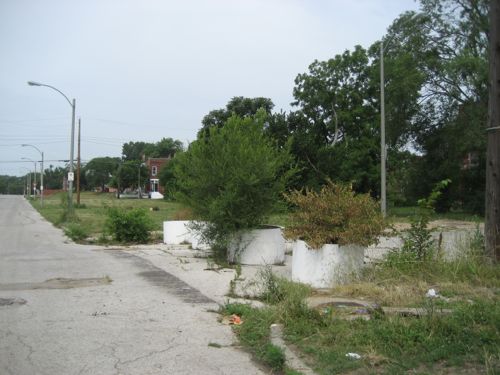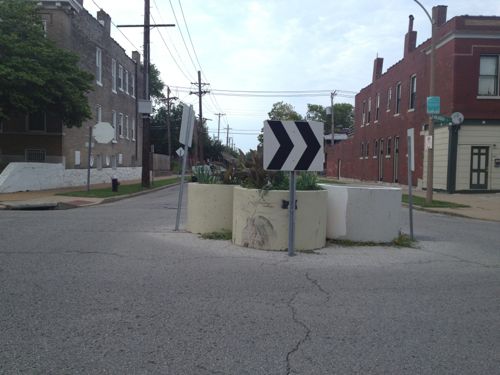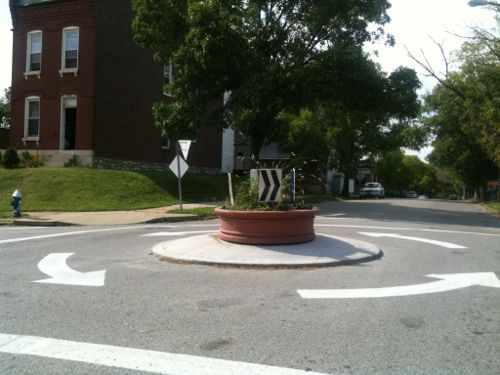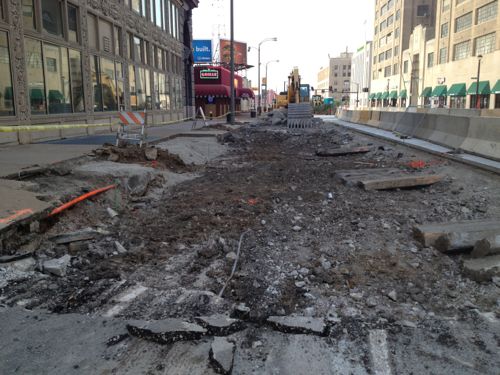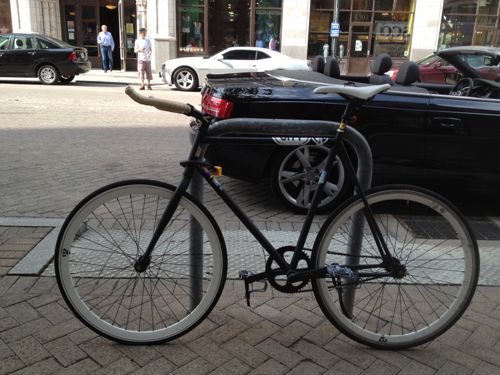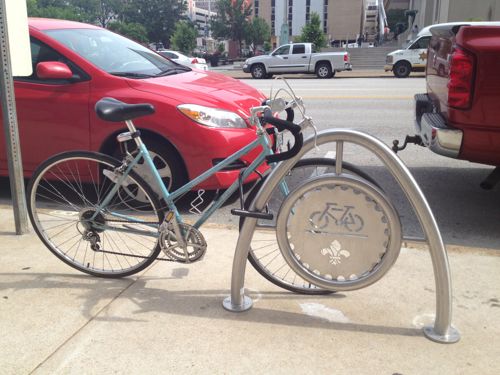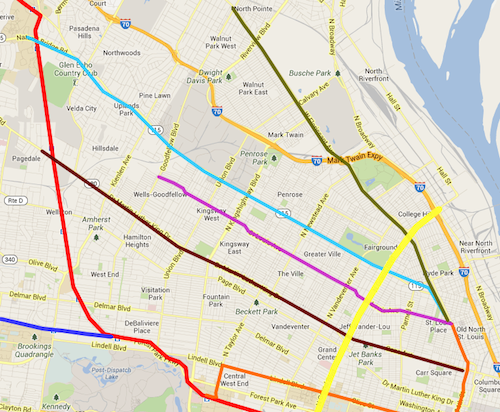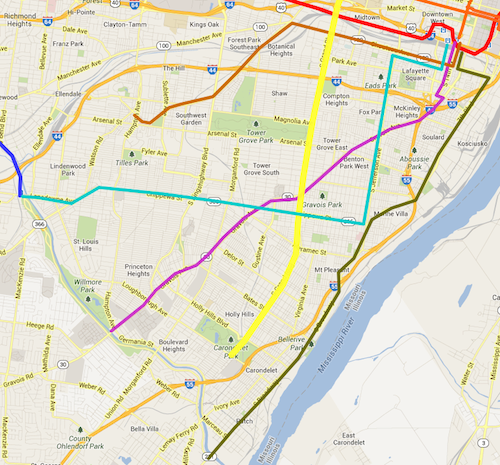Bike Lanes: Do Them Right Or Don’t Bother
Bike lanes, when done right, can greatly assist the users by guiding them and making motorists more aware. Done wrong, the cyclist often ends up in the wrong position at an intersection. Most of the time in St. Louis our bike lanes are flawed, especially at intersections.
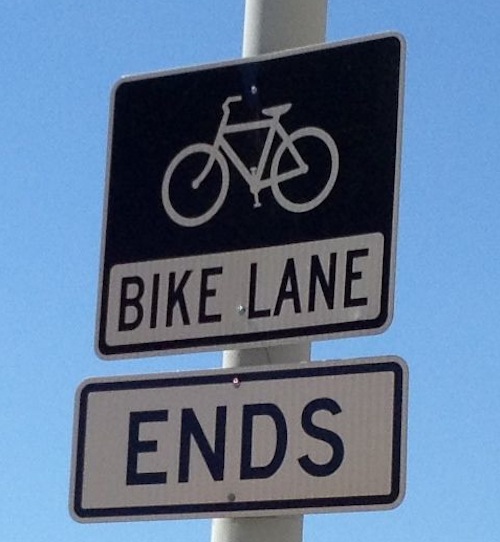
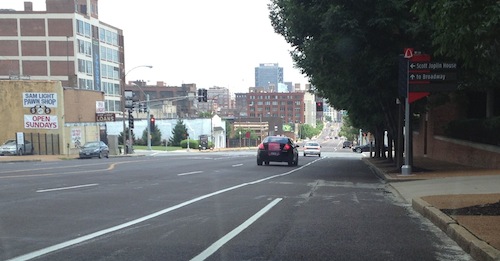
In the situations above most people on bikes will incorrectly shift to the right so they’ll be to the right of right turning vehicles — not good for the cyclists or motorists. Bikes are vehicles so those continuing straight through the intersection need to be positioned to do that. Above, that means being on the white line separating the through lane from the right turn lane.
In cities where they do more than lip service bike lanes are more helpful.
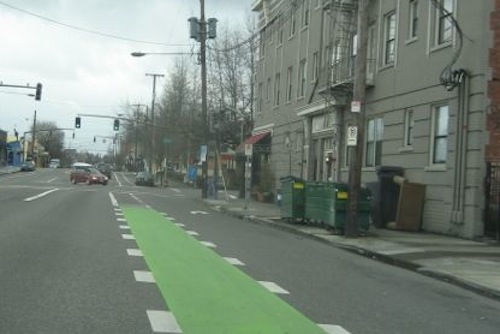
In the above example from Portland, even the most amateur cyclist will stay in the proper position on the roadway to continue forward. Motorists will be able to get into the right turn lane and turn without conflicting with the cyclist.
Colored bike lanes have been a feature of bicycle infrastructure in the Netherlands (red), Denmark (blue), France (green) and many other countries for many years. In the United Kingdom, both red and green pigments are used to delineate bike lanes and bike boxes. However, in this country their use has been limited to a few experiments in just a handful of locations. The most extensive trial took place in Portland, Ore., where a number of critical intersections had blue bike lanes marked through them and the results were carefully monitored. The results of the study, conducted by the City of Portland Office of Transportation and the UNC Highway Safety Research Center, can be found here.
The Portland photo was taken about a decade after their study. Portland cyclists must still be skilled to be able to make left turns, for example.
— Steve Patterson
